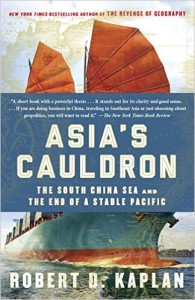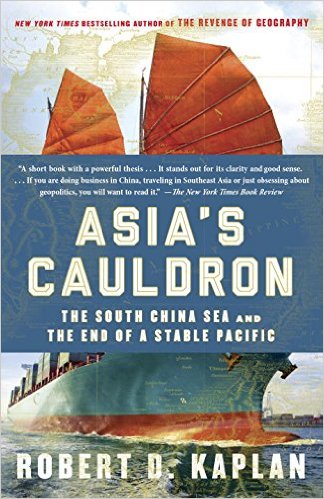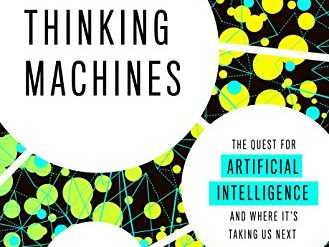
Despite the “pivot” to Asia trumpeted by the Obama Administration, despite the constant refrain by observers of world affairs that the 21st century is shaping up to be dominated by US-China competition, the American news media as well as the public continue to direct their attention primarily to the Middle East. Admittedly, that’s not surprising. After all, ghastly executions and the enslavement of thousands by ISIS, the steady vituperation from Iran, the on-again off-again war between Israel and the Palestinians, and the millions of refugees from the hell of Asaad’s Syria are too dramatic and too newsworthy to be avoided. However, at the top levels of American leadership—in the White House, the Pentagon, the intelligence establishment, and the Department of State—it’s understood perfectly well that strategic considerations force us to look westward, toward Asia, instead for a truly global perspective.
Geopolitics to the fore
It’s geopolitics that directs our attention toward China instead of the Middle East, and there are few more reliable observers of this field than Robert D. Kaplan. Kaplan’s books, written for a general audience and sometimes masquerading as travel literature, force us to look at the realities of global affairs from the perspective of the commander-in-chief. Asia’s Cauldron is an excellent example. The organizing principle of this insightful little book is the South China Sea and the ongoing struggle by the U.S. and the countries that border it to gain advantage over the others.
Asia’s Cauldron: The South China Sea and the End of a Stable Pacific by Robert D. Kaplan ★★★★☆
A simple recitation of the players in this high-stakes game makes it unmistakably clear that the outcome of this struggle will have planetary consequences. Bordering the South China Sea are China itself (population 1.5 billion), Indonesia (250 million), Vietnam (90 million), and the Philippines (nearly 100 million), as well as Malaysia, Singapore, and Taiwan, though all much smaller, significant players nonetheless. Within this explosive mix sits the United States Navy, still the dominant military force in the region.
A dynamic region full of peril
In Asia’s Cauldron, Kaplan first reviews the strategic significance of the South China Sea, which witnesses the passage of a huge proportion of the world’s trade in energy and finished goods. In addition to the sea lanes that are live-or-die considerations not just for China but for Japan and Korea as well are the massive energy reserves bottled up below the sea, estimated by China to total 130 billion barrels of oil. (These estimates are disputed.) And “[i]t is not only location and energy reserves that promise to give the South China Sea critical geostrategic importance, it is the territorial disputes surrounding these waters, home to more than two hundred small islands, rocks, and coral reefs, only about three dozen of which are permanently above water.”
Many surprises
Later chapters cover the nations around the perimeter, one at a time. Kaplan quickly surveys the history of each country and its relationship with China, then describes in detail its military capabilities (or, in the case of the Philippines, the lack of them).
For anyone who views Southeast Asia as China’s playground, there are many surprises in Kaplan’s account. Americans are well aware that Taiwan has invested heavily in its military to stave off aggression from the mainland. What we are less likely to know is that “it isn’t just China that is improving its military, so are Southeast Asian countries in general. Their defense budgets have increased by about a third in the past decade, even as European [and American] defense budgets have declined. Arms imports to Indonesia, Singapore, and Malaysia have gone up by 84 percent, 146 percent, and 722 percent respectively since 2000.”
Assessing the balance between the U.S. and China
The overarching theme in Asia’s Cauldron is Kaplan’s nuanced assessment of the prospects for armed hostilities between the U.S. and China. He focuses largely on the buildup of China’s navy, pointing toward several strategically significant factors. Among these are the underground submarine base China is building on Hainan Island, which sits astride the Gulf of Tonkin, and the steady growth of China’s submarine fleet, dominated by advanced diesel-powered ships that are much more difficult to detect than the atomic-powered subs of the American fleet.
While China moves steadily toward a “blue-water” navy—one capable of defending itself as far from home as the Indian Ocean—budgetary constraints continue to shrink the U.S. Navy. Though he is careful not to predict any outcome with certainty, Kaplan sees it as likely that China will eventually reach naval parity with the U.S., thus reducing the effectiveness of the military shield it now affords our allies in the region, the Philippines, Malaysia, Singapore, and Vietnam.
In Asia’s Cauldron, Kaplan crams a lot of insight into a very small book. He goes astray only in discussing the history of Malaysia and Singapore, with a lengthy digression into philosophy and political science theory, attempting to justify his extensive remarks praising the authoritarian regimes of Lee Kuan Yew in Singapore, Mahathir Mohamad in Malaysia, and Chiang Kai-Shek in China and later Taiwan. This is vintage Kaplan, the geopolitical “realist.”
About the author
For years, Robert D. Kaplan‘s geopolitical analyses have been debated both inside and outside the halls of American government. Often controversial, his views crop up within the Pentagon, the State Department, the White House, and no doubt the CIA, too, not to mention the think tanks and academic centers where U.S. foreign policy is shaped. Asia’s Cauldron is his 16th book.
For more great reading
I’ve also reviewed two other books by Robert D. Kaplan:
- The Revenge of Geography: What the Map Tells Us About Coming Conflicts and the Battle Against Fate (Geopolitical analysis illuminates history and world politics)
- Monsoon: The Indian Ocean and the Future of American Power (The geopolitical reality behind the “pivot to Asia”)
This is one of the books I’ve included in my post, Gaining a global perspective on the world around us. It’s also one of 30 insightful books about China.
This is one of the many good nonfiction books about national security.
Like to read books about politics and current affairs? Check out Top 10 nonfiction books about politics.
And you can always find my most popular reviews, and the most recent ones, on the Home Page.



























